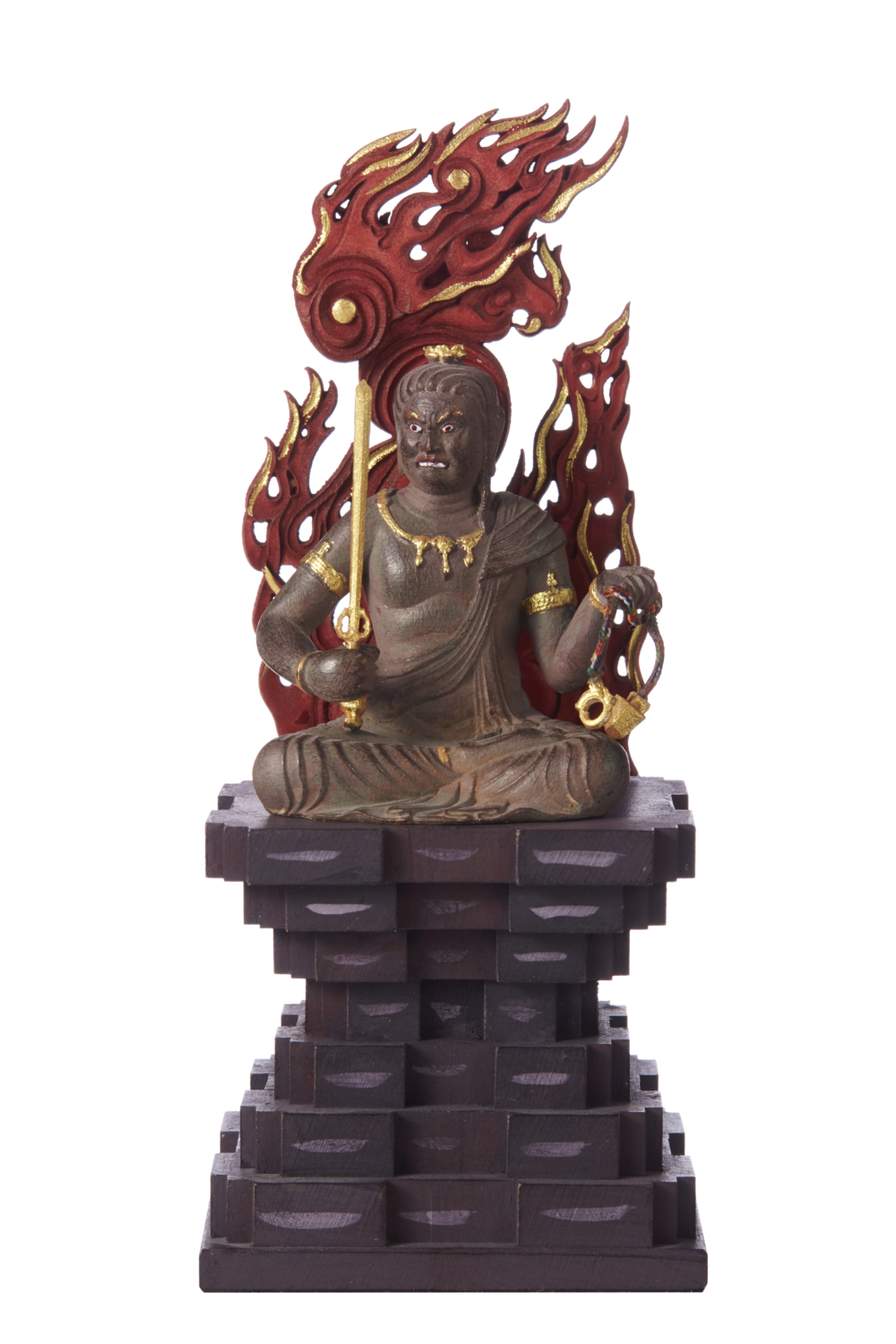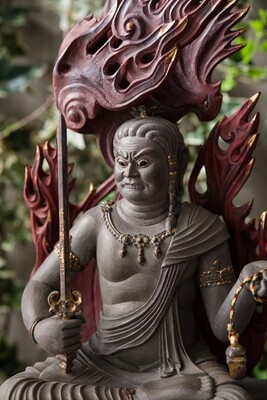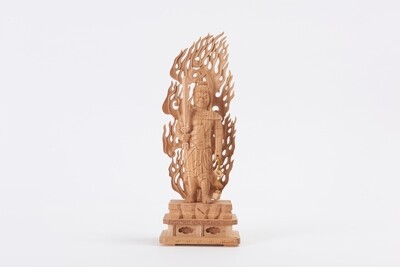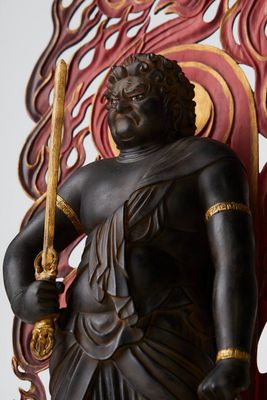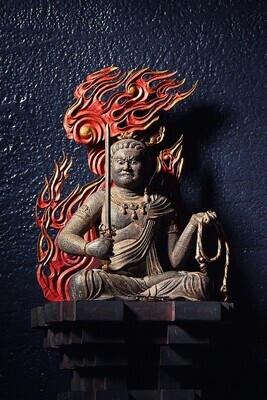Fudo Myoo (古代色不動明王座像)
The standing Fudo Myō-ō represents the "world of the burning fire," which separates the human world and the Buddhist world, and looks out over the human world. In contrast, the sitting Fudo Myoo represents a steadfast and immovable figure. The angular material combined with the tightly compressed central seat symbolizes the rigidity and immovability of Fudo Myō-ō, and serves as a specific seat for the deity.
The ancient seated statue of the Rainbow-Colored Fudo Myoo is typically portrayed in a seated posture. He is often depicted in a seated position with a sword held in his left hand and his right hand facing upward, palm open. This posture symbolizes his unwavering spirit and composed demeanor, which are distinctive characteristics of Fudo Myoo. The hand holding the sword represents the power to cut through evil and delusions.
True to its name, the "Rainbow-Colored Fudo Myoo," this statue is adorned with vibrant colors. In ancient Japanese Buddhist art, color plays a highly significant role, with each color carrying its own symbolic meaning. The diverse hues of the Rainbow-Colored Fudo Myoo were used to convey the idea of cosmic harmony and peace.
The ancient seated statue of the Rainbow-Colored Fudo Myoo was created as an integral part of Buddhist faith and worship. Fudo Myoo symbolizes protection against worldly desires and evil, offering spiritual stability and guidance to believers. In temples and shrines, worshippers would bow before the statue and offer their prayers.
These ancient depictions of the Rainbow-Colored Fudo Myoo were created through both sculpture and painting. Sculpted versions were carved from materials such as stone or wood, while painted representations were crafted as Buddhist paintings. Both forms of art were meticulously created to faithfully capture his distinctive posture and vibrant colors.
These ancient seated statues of the Rainbow-Colored Fudo Myoo hold a significant place within Japan's Buddhist culture and art history. They are preserved in many temples and museums today, representing the crystallization of ancient faith and artistic expression. These artworks serve as excellent examples of the integration of religious devotion and artistic representation, earning them great respect as essential pieces within the realm of Japanese Buddhist art.
- Size: H12.7×W5.6×D4.8 (cm), 95g
- Material: Tsuge (柘植)
- Made in China
- You can choose the option to consecrate this statue (give an eye-opening ceremony) before it is shipped from Japan. If you choose this option, we will bring the statue to a Japanese temple, and pay them the necessary fees so that your statue is properly consecrated. The temple will issue a certificate of proof with your name on it, which will also be shipped together with your statue
- Shipped globally from Japan by using DHL. DHL is the world-class shipping services provider who makes international delivery a fast, smooth, and hassle-free experience. Delivery time can be faster than when shopping at an e-commerce website in your country, and of course your package will be covered by insurance. You can check the shipping cost for your entire order before you make a purchase
